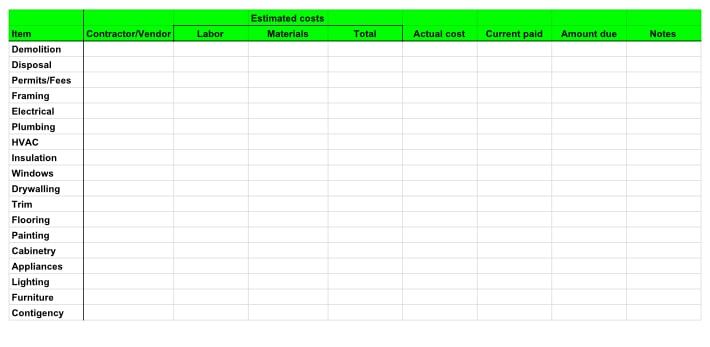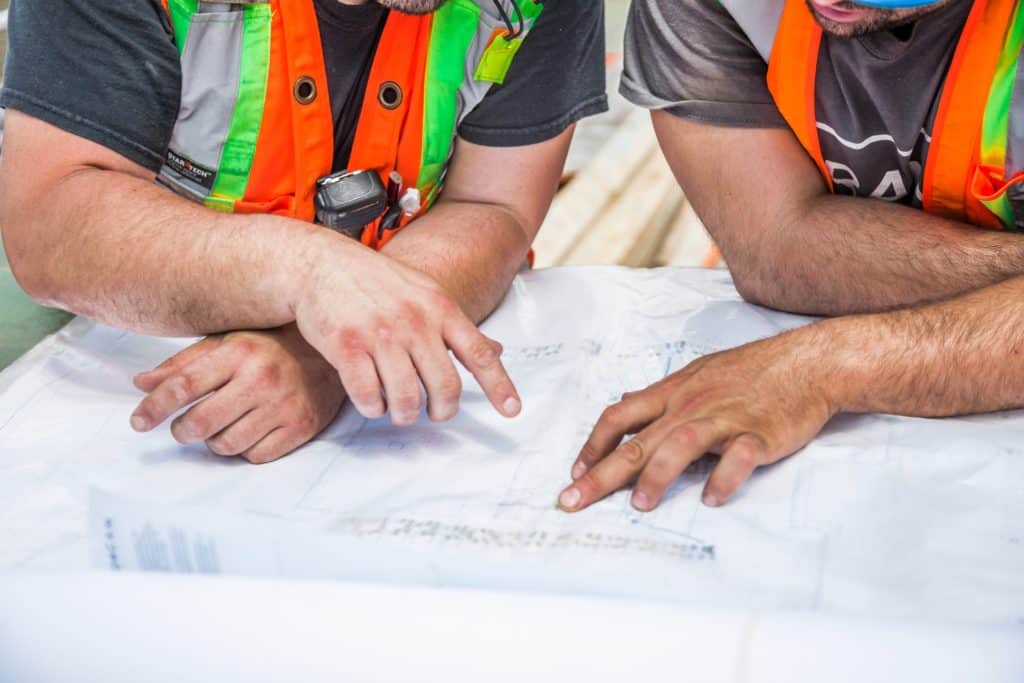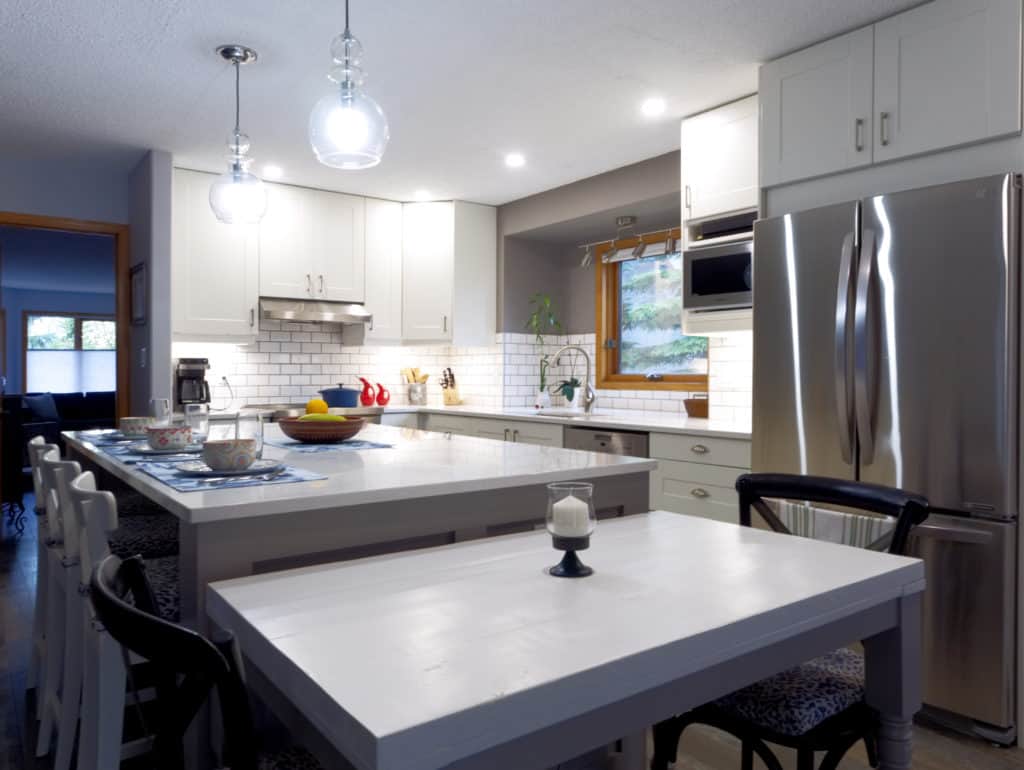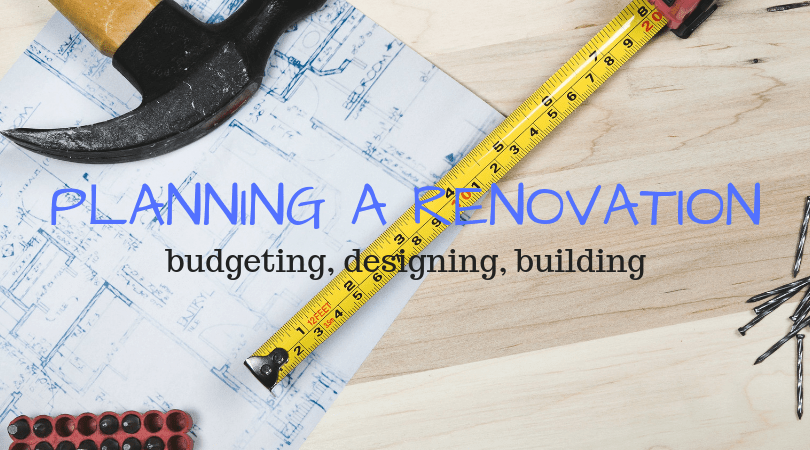“We definitely spent more than planned.” “Our renovation took longer than anticipated.” Why are these the most common statements from people post renovation. It’s usually because they skipped the most important part of the process- creating a renovation plan.
Right now I am in the midst of a basement renovation at the Beige Bungalow. Because I am going through this exact process at the moment, it seemed like the perfect time to write this post.
Creating a renovation budget
It’s near impossible to predict the exact cost of a renovation, but creating a renovation plan will help you come pretty close. Start out by creating a wish list for the finished space. Decide whether this is a simple update, a large overhaul, or a completely custom design just for you. Be realistic about your ‘wants’ vs. ‘needs’ and remember that in the end, the quality of finishes often determines the final result. Do some research online, and start adding price tags to each of the items on your wish list (more on this below). This is the first step of your renovation plan. Unfortunately, this is where most homeowners soon find their dreams exceed their budget.
What is the condition of your home? This is extremely important when building your renovation plan. Older homes often lean to more expensive renovations, especially when they have not been updated. You run the risk of finding unforeseen problems such as knob and tube wiring or galvanized steel plumbing.
Be honest about the size of the renovation you want to complete. Keep in mind renovations have a tendency to snowball past the original intended space. For example, removing an interior wall can lead to flooring replacement, which could affect an entire floor of the house.
What is the value of your home in comparison to the neighbourhood comparables. If you are creating a specific space just for you, this step is less important. However, if you are trying to increase the value of your home and get the best return on investment (ROI) when it comes times to sell, this is extremely important. You need to find the right balance between spending enough on the right upgrades, but not so much that your neighbourhood can’t support the new potential price.
Use a spreadsheet
It’s time to head back to computer class in high school and pull out the spreadsheet. Add each item and it’s estimated cost. As the renovation progresses, add in the actual cost spent. If you are starting to exceed your budget, make adjustments as the project progresses.

When creating the spreadsheet you will need to do some research to determine the estimated costs. Be wary of online renovation calculators or googling “average kitchen renovation cost’. The calculators are rarely updated as materials and labor increases, and the average cost can vary widely between geographical locations. The best place is to check out your local improvement store and get an idea of the prices for the various materials you will need. At the same time, ask around and get a variety of quotes for the project you hope to complete (if hiring a contractor). I always suggest getting a minimum of 3 quotes. Keep in mind that you should be considering more than just the final price tag. Experience, professionalism, and how you get along with the contractor are just as important as the price you’ll pay.
Have a contingency fund
Even experienced contractors go over budget. But the goal is to remain within the contingency fund. Allocate 10-15% of the total cost of the renovation to unexpected problems. Leaving ‘unspent’ money in your budget, helps avoid nasty overages.
Tips for staying within budget
At The Homestud, we advocate for sustainability. This means using what you have instead of buying new when possible, and finding creative solutions to complex problems.
- Set priorities. A good renovation plan begins with a clear path of what you want to accomplish. Be realistic about your ‘needs’ vs. ‘wants’.
- Examine your home closely. Look for the hidden assets. For example, homeowners often assume more space solves every problem. When actually, an effectively designed space is the better solution. Old hardwood can be refinished. Old trim and doors (in good shape) can be refinished as well. You can even change their design completely with some creativity.
- Do the work in stages. If the cost of your renovation is keeping you awake at night, it isn’t worth it. Consider tackling the renovation in stages to avoid financial stress.
- Consider upfront costs versus operating costs. Water-conserving fixtures, energy-efficient lighting, and high-efficiency heating systems mean long-term savings, even if they cost more upfront. Do the math comparing upfront vs operating costs for the next 5, 10, or 25 years. The longer you own your home, the more you will save.
- Do some of the work yourself. This is an obvious one. If you have the skills, time, and interest, you can stretch your budget by tackling some of the work yourself.
I suggest trying to complete the initial budgeting step as best as possible before meeting with contractors, designers, or renovators. Having as much information as possible when you start sitting down for meetings is crucial to asking the right questions if you plan on hiring professionals.
Designing the space
A good design is critical to a successful renovation. Whether you are remodelling an entire floor, updating a kitchen, or adding a bathroom, the quality of the design will ultimately determine your satisfaction at the end of the project. The information you developed above through your own planning will pay off at this point in the process.

To hire a designer or not?
This step of the renovation plan is somewhat of a controversial topic. Do you hire a designer or not? While most homeowners believe they can forge ahead on their own, this can often be a fatal error. Let me tell you why.
No matter what, you will encounter problems mid renovation. This can be something as simple as as an out of stock appliance, to much larger issues such as structural barriers to a design or plumbing and HVAC in unexpected areas. While these can be sorted out with more money, what if there is no more money…
You will need to design on the fly. And if you aren’t adept in the world of design, the contractors head will be spinning from the barrage of changes, and there will be massive increases in costs from those changes. A good designer will not only foresee some of these problems ahead of time, they will also have contingencies in place for the unexpected.
This decision also comes down to the size of the renovation. If you are adding a main floor powder room, any contractor should be able to easily handle the design. However, if the project encompasses a complete floor, where flow and use of space are crucial, then a designer is often the best choice. Many renovation companies now have a designer on staff, while others recommend a designer or architect from their professional network. Regardless, having the contractor involved at the design stage is crucial to ensuring the design is both practical and feasible from a construction standpoint.
Renovation plan step 2: Generating the design
The design process actually began when you started creating your budget. Hopefully during that time you were keeping a list, photos, or drawings of what you like.
Look at as many photos as you can. Sites like Houzz are great starting points for generating ideas. Determine the goal for the space. What are you trying to accomplish? Be realistic and start laying out the room on paper. If you are working with a designer, this entire process will be accomplished together in a series of meetings.
The final concept sketches can then be used by the contractor to generate an estimate. If you plan to complete the work yourself, go ahead and update your budget spreadsheet with the exact materials and quantities you will be using.

Remember, when your renovation includes structural changes or construction permits, specific drawings and/or blueprints are required for approval by your municipality. I encourage everyone to hire professionals for these parts of the renovation, and never skip on getting your permits.
There are many online tools available to help with the design process. To see a complete walk through of one of our designs, take a look at how we designed the kitchen at the Beige Bungalow.
Building (not really part of the renovation plan..)
Remember when you got a variety of quotes in the budgeting portion of the renovation plan. This is where they will be put to use.

By the time you reach this point, you should have a pretty good idea of the scope of work required, and an estimated cost of the renovation. Chose the contractor best suited for the project (it shouldn’t always be the cheapest one!). Hopefully this is also the one you feel most comfortable speaking to and using. It is essential to keep a line of communication with them throughout the project. Trust me, there is nothing worse than having homeowners who don’t speak their mind until it’s too late. If you are unhappy with something, speak up!
I promise you, renovating will be stressful, but when planned properly, it is always worth it in the end.


No Comments